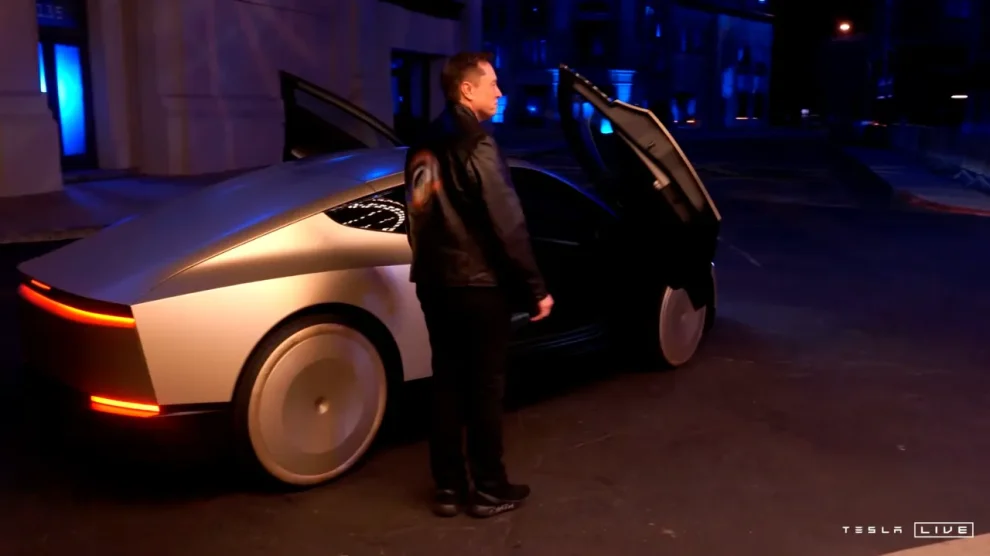Tesla has announced its ambitious goal to achieve fully unsupervised self-driving artificial intelligence (AI) by 2027. This audacious timeline, revealed during the company’s recent AI Day event, promises to revolutionize transportation as we know it. However, the announcement has been met with a mixture of excitement and skepticism from industry experts, regulators, and competitors alike.
Tesla’s Vision of A World of Autonomous Vehicles
Tesla’s CEO, Elon Musk, known for his grandiose predictions and ambitious timelines, outlined the company’s roadmap to achieving unsupervised self-driving AI during a presentation that left many in awe and others in disbelief.
By 2027, we expect to have vehicles on the road that can navigate any environment, in any weather condition, without human intervention,” Musk declared. “This isn’t just about improving our current autopilot system; we’re talking about a fundamental leap in AI capabilities that will make human drivers obsolete.”
The proposed system, dubbed “TeslaAI,” is said to utilize a complex neural network that learns from millions of miles of real-world driving data, combined with advanced sensor fusion technology and next-generation hardware.
Dr. Amelia Rodriguez, Tesla’s Head of AI Research, elaborated on the technical aspects: “We’re developing a multi-modal AI system that integrates visual, radar, and lidar data in ways never before achieved. Our neural networks are designed to understand and predict traffic patterns, pedestrian behavior, and even anticipate potential hazards before they occur.
The Promise of Unsupervised Self-Driving
The implications of truly unsupervised self-driving AI are profound and far-reaching:
- Safety Improvements: Tesla claims that AI-driven vehicles will significantly reduce accidents caused by human error, potentially saving thousands of lives annually.
- Increased Mobility: Autonomous vehicles could provide transportation options for those unable to drive, including the elderly and disabled.
- Traffic Optimization: AI-controlled vehicles could communicate with each other and traffic infrastructure, potentially reducing congestion and improving traffic flow.
- Environmental Benefits: Optimized driving patterns and reduced congestion could lead to lower emissions and improved air quality in urban areas.
- Economic Impact: The trucking and delivery industries could see dramatic changes, with the potential for 24/7 operations without human drivers.

Skepticism and Challenges
Despite Tesla’s optimistic outlook, many experts in the field of autonomous vehicles and AI express significant doubts about the feasibility of achieving unsupervised self-driving within the proposed timeframe.
Dr. Sarah Chen, an autonomous vehicle researcher at MIT, voices her concerns: “While Tesla has made impressive strides in driver assistance technology, the jump to fully unsupervised driving is exponentially more complex. The 2027 timeline seems overly optimistic given the current state of the technology and the regulatory landscape.”
Several key challenges stand in the way of Tesla’s vision:
1. Technical Hurdles
The development of AI capable of handling every possible driving scenario without human intervention is an enormous technical challenge. Dr. Michael Lee, a computer vision expert, explains: “Edge cases – rare and unexpected situations – are the biggest hurdle for self-driving AI. It’s one thing to handle normal traffic conditions, but quite another to deal with construction zones, severe weather, or unpredictable human behavior.”
2. Regulatory Framework
The legal and regulatory landscape for fully autonomous vehicles is still in its infancy. Mark Thompson, a transportation policy analyst, notes: “We’re years away from having a comprehensive regulatory framework for unsupervised self-driving vehicles. Developing and implementing these regulations will likely take longer than the technology itself.”
3. Public Trust and Acceptance
Recent high-profile accidents involving driver assistance systems have eroded public trust in autonomous vehicle technology. Rebuilding this trust and convincing the public to hand over complete control to AI will be a significant challenge.
4. Ethical Dilemmas
The development of self-driving AI raises complex ethical questions. Dr. Lisa Wong, an AI ethicist, points out: “How do we program an AI to make split-second decisions that could impact human lives? These are not just technical problems, but profound philosophical and ethical dilemmas that need careful consideration.
5. Infrastructure Readiness
Many experts argue that current road infrastructure is not ready for fully autonomous vehicles. John Smith, an urban planning specialist, explains: “Our roads, traffic signals, and signage are designed for human drivers. Transitioning to an AI-driven system may require significant infrastructure upgrades.
Industry Reactions and Competitor Responses
Tesla’s announcement has elicited a range of responses from competitors and industry observers:
- Waymo, Google’s self-driving car project, released a statement emphasizing their commitment to a gradual, safety-first approach to autonomous driving.
- General Motors reiterated their focus on driver assistance technologies, stating that they believe in a stepped approach to autonomy.
- Uber, which has invested heavily in self-driving technology, expressed skepticism about the timeline but acknowledged the importance of pushing the boundaries of what’s possible.

Dr. Emily Johnson, an automotive industry analyst, provides context: “Tesla’s announcement has certainly shaken up the industry. While most competitors are publicly skeptical, there’s no doubt that this will accelerate research and development across the board.”
The Role of Data and Privacy
One of the key advantages Tesla claims in the race to unsupervised self-driving is its vast trove of real-world driving data collected from its fleet of vehicles. However, this data collection raises significant privacy concerns.
Privacy advocate Alex Rivera warns: “The amount of data required to train these AI systems is staggering. We need to seriously consider the privacy implications of having our every movement potentially recorded and analyzed by corporate AI systems.
Economic Implications
The potential economic impact of widespread unsupervised self-driving technology is enormous and multifaceted:
- Job Displacement: The trucking and taxi industries, which employ millions worldwide, could face significant disruption.
- New Job Creation: The development and maintenance of self-driving AI systems could create new high-skilled job opportunities.
- Insurance Industry Changes: With the promise of increased safety, the auto insurance industry may need to radically rethink its business models.
- Urban Planning Revolution: Cities may need to be redesigned to accommodate fleets of autonomous vehicles, potentially freeing up space currently used for parking.
Economist Dr. Maria Gonzalez comments: “The economic ripple effects of truly unsupervised self-driving AI would be profound. While there are certainly challenges, particularly in terms of job displacement, the potential for increased productivity and new business models is immense.
Balancing Optimism and Realism
As the debate rages on, it’s clear that the path to unsupervised self-driving AI is neither straight nor simple. While Tesla’s ambitious timeline has been met with skepticism, many acknowledge the value of setting bold goals to drive innovation.
Dr. David Chang, a robotics professor at Stanford University, offers a balanced perspective: “While I’m skeptical of the 2027 timeline, I applaud Tesla for pushing the boundaries. Moonshot goals like this can inspire breakthroughs, even if the original timeline isn’t met.”
Several key factors will likely shape the development of unsupervised self-driving AI in the coming years:
- Advances in AI and Machine Learning: Continued progress in areas like deep learning, computer vision, and neural networks will be crucial.
- Sensor Technology Improvements: The development of more advanced, reliable, and cost-effective sensors will play a key role.
- Regulatory Evolution: The pace at which regulators can develop and implement appropriate guidelines will be a critical factor.
- Public Acceptance: Gradual exposure to increasingly advanced driver assistance systems may help build public trust in autonomous technology.
- Collaborative Efforts: Industry-wide collaboration on safety standards and technology sharing could accelerate progress.
Tesla’s proclamation of unsupervised self-driving AI by 2027 has undoubtedly ignited a new phase in the autonomous vehicle race. While the timeline may be viewed as overly optimistic by many, the vision it presents is a compelling one – a future where transportation is safer, more efficient, and accessible to all.
As we move forward, it’s clear that achieving this vision will require not just technological breakthroughs, but also careful navigation of regulatory, ethical, and societal challenges. The road to unsupervised self-driving AI is likely to be longer and more complex than Tesla’s timeline suggests, but the destination – a revolution in how we think about transportation and mobility – seems increasingly within reach.
Whether Tesla achieves its 2027 goal or not, the company’s bold prediction has already succeeded in one crucial aspect: it has reignited the conversation about the future of transportation and challenged both industry and society to think bigger and move faster.
As we stand on the brink of this potential transportation revolution, one thing is certain: the journey towards unsupervised self-driving AI will be one of the most fascinating and consequential technological endeavors of our time. It’s a journey that will require the combined efforts of technologists, policymakers, ethicists, and the public at large to navigate successfully.
The dream of fully autonomous vehicles has captured our collective imagination for decades. Now, with Tesla’s ambitious timeline on the table, that dream feels closer than ever – even if the reality may still be further down the road than some would have us believe.
















Add Comment